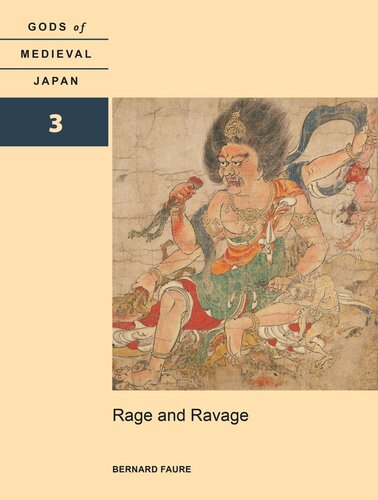

Most ebook files are in PDF format, so you can easily read them using various software such as Foxit Reader or directly on the Google Chrome browser.
Some ebook files are released by publishers in other formats such as .awz, .mobi, .epub, .fb2, etc. You may need to install specific software to read these formats on mobile/PC, such as Calibre.
Please read the tutorial at this link: https://ebookbell.com/faq
We offer FREE conversion to the popular formats you request; however, this may take some time. Therefore, right after payment, please email us, and we will try to provide the service as quickly as possible.
For some exceptional file formats or broken links (if any), please refrain from opening any disputes. Instead, email us first, and we will try to assist within a maximum of 6 hours.
EbookBell Team

0.0
0 reviewsWritten by one of the leading scholars of Japanese religion, Rage and Ravage is the third installment of a milestone project in our understanding of the mythico-ritual system of esoteric Buddhism—specifically the nature and roles of deities in the religious world of medieval Japan and beyond. Bernard Faure introduces readers to medieval Japanese religiosity and shows the centrality of the gods in religious discourse and ritual; in doing so he moves away from the usual textual, historical, and sociological approaches that constitute the “method” of current religious studies. Throughout, he engages theoretical insights draws from structuralism, post-structuralism, and Actor-Network Theory to retrieve the “implicit pantheon” (as opposed to the “explicit orthodox pantheon”) of esoteric Japanese Buddhism (Mikkyō).
In volumes one and two, The Fluid Pantheon and Predators and Protectors, Faure argued against a polarity or dichotomy between buddhas and kami by emphasizing the existence of deities that did not belong to either category, and he rejected the retrospective notion of “hybridity.” The present work makes a similar case about the reified distinction between gods and demons to show that, due to the fluid nature of the Japanese pantheon, these terms do not represent stable identities: gods can become demons, and demons are sometimes deified. Divine protectors were often former predators, and in some instances they retained their predatory features even after being converted. After emphasizing the demonic aspects of devas as “gods or spirits of obstacles” in the earlier volumes, Faure now focuses on the deva-like or “divine” aspects of deities that have been described as “demonic.”
Rage and Ravage and its companion volumes persuade readers that the gods constituted a central part of medieval Japanese religion and that the latter cannot be reduced to a simplistic confrontation, parallelism, or complementarity between some monolithic teachings known as “Buddhism” and “Shinto.” Once these reductionist labels and categories are discarded, a new and fascinating religious landscape begins to unfold.